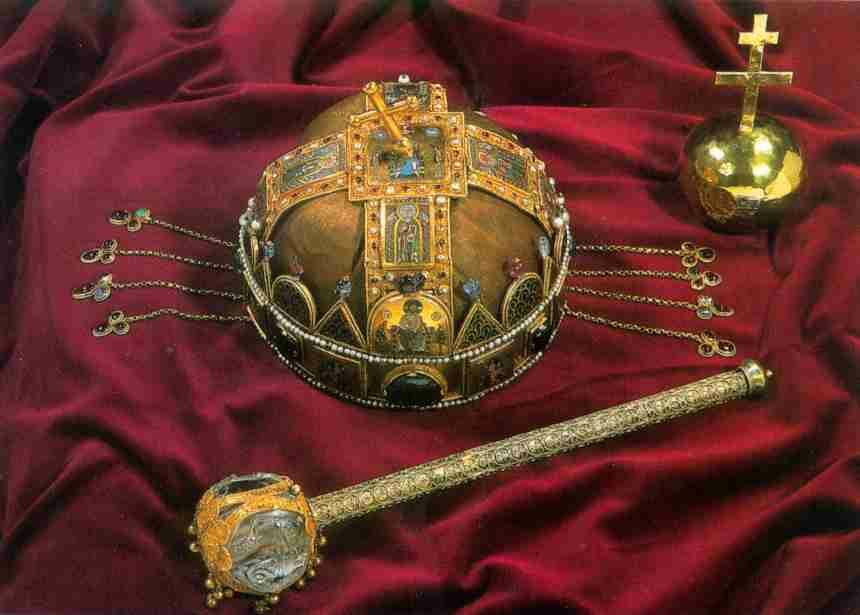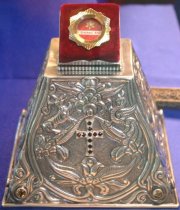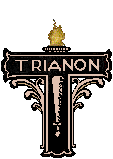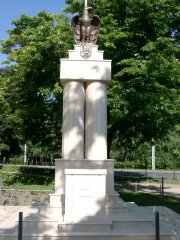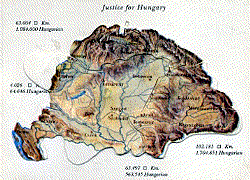  
|
|||||||||||||||||||||||||||||||||
|
Roman Catholic parishfrom (Jász) Lajosmizse greets you on its web page with the 2000 year-old catholic greeting: Praised be our Lord Jesus Christ! |
|||||||||||||||||||||||||||||||||
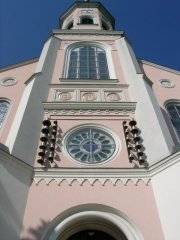 |
|||||||||||||||||||||||||||||||||
| The Hungarian
people consisted of seven tribes before
they came to Central Europe. The leaders: Álmos(Árpád-s
father), Elõd(Szabolcs-s father), Ond (Etel-s father), Köd
(Csörsz-s father), Tas (Lehel-s father), Huba (Szemere-s
father), Töhötöm (Harka-s father) contracted
a „compact sealed with blood” so to find together
a new country for their people.
Our Jazygian ancestors joined Tas-s and later Lehel-s people. They were from one of the Alanian branches from Iran. Their relatives were the Osteks. The other part of the Jazygian ancestors came to the Carpathian basin 250 years after the Hungarian Conquest. |
|||||||||||||||||||||||||||||||||
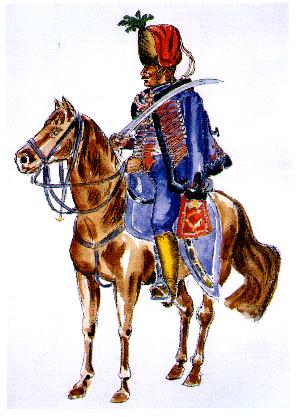 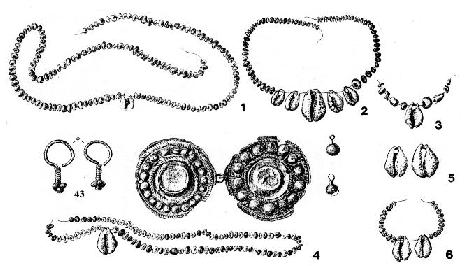  |
|||||||||||||||||||||||||||||||||
| The Jazygian
people-s skin is slightly darker than that of the Europeans.
Around 350 B.C., we migrated from the area of Iran
to the northern part of the River Sir Darja, the southern part
of the Kazah-steppe, in the Csu valley, near
the Kara-Tau.Together with the Avars, we formed the Aszi culture. When
this culture broke up at the beginning of
the 9th century due to external attacks
and internal conflicts, our name went through a transitional change:Aszi
-Asz -Jasz (Jazygian). Our ancestors continually expanded
westward across the Volga River to
the Caucasus, where they united with the
Alans living there. Later they joined the Cumanians. Wwith whom
they settled down in the Hungarian Kingdom. They were given independence
on both sides of the Zagyva River
after the saint king defeated the Cumanians and Petchnegs
at Temes in 1091. Our Jazygian ancestors were given the right
to have their cases judged by their own captain After Károly
Róbert’s letter of emancipation in
1323, they were given equal rights with the Cumanians.
In the XV. century, when the counties were formed, Berényszék
was given the title of Jász County,
but it retained its independence until 1876. Our ancestors
spoke the Iranian language that was similar to the Alan,
but later just like the Cumanians, they assimilated linguistically
with the Hungarians, however we proudly maintain our Jazygian identity. |
|||||||||||||||||||||||||||||||||
Our Jazygian
name, relates back to our ancestors
nomadic way of life, and according to
some sources it means summer residence; according to others
it is our weapon, the bow, There are
some Chinese and Turkish references that
mention our ancestors. We were a wandering people covering large territories. |
|||||||||||||||||||||||||||||||||
Our forefathers
came in contact with the Byzantine Christianity,
while a group guarded the “ancient faith”. In the middle of the
XVth. century they converted to the Roman Catholic faith
due largely to the Franciscan monks. We can consider the Franciscan
church in Jászberény as the
cradle for the Jász Christianity. In 1472, the pope
allowed the Minorite order to use the church because
they had converted the Jazygians to the Catholic religion.
This can be seen in the letter of foundation of the Minorite church
in Jászberény.The Jazygians remainrd Catholic, while most
of the Cumanians became Calvinist during the Reformation. |
|||||||||||||||||||||||||||||||||
|
|
|||||||||||||||||||||||||||||||||
Although
the historical area for the Jazygians
is around Jászberény, there are settlements further
away as well. Since our ancestors’ foremost occupation
was animal husbandry, they continually increased
their grazing land. Their progency surpassed that of
the rest of the people living in the area.
As they continually needed more and more land,
they moved on, reaching far away places including this area
where we are today: midway between
the Danube (Duna) and Tisza rivers. This is where Lajosmizse is
situated. |
|||||||||||||||||||||||||||||||||
This wonderful
part of “God’s plough-land” was already inhabited
in the Bronze Age. After the Hungarian Conquest, it was
the pasture for the chiefdom and later it became royal
territory. The first settlements were formed by the
Cumanians (Kunok) after the Tartar invasion. Old documents
list Mizseszállás, Lajosszállás and Beneszállas.
The Jazygians-Cumanians had seven centres, one of them being Mizse Széke.
It is interesting that it derived
its name from Mizse, king Kun László’s
palatine, who became a Muslim. Before the Battle of Mohács there
were three churches in this area: in Berénybene,
Fels?mizse and Alsólajos. After the Turkish wars,
the settlements and flourishing parishes became
deserted areas and only the ruins remained of the
churches. The remains of Felsõmizse can still be seen in the
north-eastern part of our city. More information is available on our
city’s web page. |
|||||||||||||||||||||||||||||||||
| During
the Turkish occupation, the Turkish officers owned this
area renting it to the town of Kecskemét and Nagykörös.
Later the emperor Leopold I., sold it for 500.000 gold forints
to the German Order of Knights. Jászberény was one of
thetenants.
In 1735 the Invalidus bought the
pastures from the German Order of Knights. Ten years later, with Maria
Terézia’s permission, Jászberény purchased Mizse
and Lajos pusztas, and half of Bene puszta (Berénybene
today). The other half of Bene puszta became the property of Jászladány.
Today this is the separate town of Ladánybene located twelve
kilometres west of us. |
|||||||||||||||||||||||||||||||||
Jászberény
used the land for patures. Three inns were built: Mizse csárda,
Lajos csárda, and Földeáki csárda,
which today is the town hall. The population (who were
shepherds) built their homesteads (tanya)
around these inns. In 1835, approximately
250 people lived in the area with
no small risk. The sparsely populated land
was easy prey for the bands of outlaws. Wer know from Kálmán
Balla’s notes that Mihály Bogár-Szabó
and his outlaws made life difficult for the people living in the area. |
|||||||||||||||||||||||||||||||||
The town of Jászberény
built a church. The town had flourished by the millennium, but
the two World Wars stopped this
growth. Only slowly did the town’s main street develop
along the E5 route. Today, an attractive towncentre with
flowers, parks, and a bronze statue of
King Stephan greets visitors. Toursim has also developed.
The “tanya” area is a paradise for horseback riding tourists. |
|||||||||||||||||||||||||||||||||
Along route 5, the Tanya Csárda (<http://www.tanyacsarda.hu>) and the Gerébi Curia along the Ceglédi road (<http://www.gerebi.hu>) are well known for their hospitality. We invite you to come and see for yourself. |
|||||||||||||||||||||||||||||||||
A few word about
the religious life of the Jazygians |
|||||||||||||||||||||||||||||||||
The priests from
Kecskemét, Irsa and Örkény looked after the spiritual
life of the shepherds. As more and more of them moved out to the pastures
with their flocks, a missionary monk went with them to celebrate mass.
He lived, first in the Large- inn, then the
Small-inn until 1862, when the last house on the edge of the village
the was purchased. This became the residence of the priest and
the cantor. It also housed a chapel. In 1877,
the village became “Jász-Lajos-Mizse Nagyközsség”
and two yeas later, in 1879, the local church
became a parish. The development was fast, and it shows the Jazygians
desire to live here. |
|||||||||||||||||||||||||||||||||
The organization
of the parish church |
|||||||||||||||||||||||||||||||||
The condition
of becoming a parish was a contract, which
is still valid today. It states that the citizens
of Lajosmizse undertake the upkeep of the church,
the priest’s and the cantor’s residence. They contribute
the vicar’s, the cantor’s, the sacristan’s and the
bell-ringer’s salaries and send their
share to maintain the diocese. In exchange, the bishop agrees
to look after the Catholics spiritual needs by assigning priests fot
them. |
|||||||||||||||||||||||||||||||||
The building of
the church |
|||||||||||||||||||||||||||||||||
A church-building
committee was formed, and in 1894 they accepted
Károly Bachmann’s architectural plan. The construction
began in April of 1895, for which they made no fewer than 1.200.000
bricks on site.First the parsonage and cantor’s house were
built. The church was ready by August 25th. 1896, the feast day of its
patron saint king Saint Louis. János Jung, auxiliary bishop of
Vác, consecrated the church. This area was part of the
Vác diocese until the 1992 restructuring, when it became part
of the Kalocsa-Kecskemét archdiocese. |
|||||||||||||||||||||||||||||||||
|
|||||||||||||||||||||||||||||||||
From 1913,
between the two World Wars, Ern? Mihalovics, cano,n undertook
to repair the damage suffered during the war. He then concentrated on
strengthening the spiritual life of the parishioners. With his
example he empahsied the adoration of the Eucharist. He was called
the “little sacrament” because of his short stature and his prayerful
life. In the post war Communist terror period, he was shamed by having
to walk the streets of Kecskemét with a tablaux hung around
his neck. He was beaten and tortured. His grave is among his parishioners
in our cemetery. |
|||||||||||||||||||||||||||||||||
The consequences
of World War II and the restoration: |
|||||||||||||||||||||||||||||||||
The church
suffered extensive damage during the war.
There was hole large enough for a horsecart
to fit through it on the right side
under the choir. The uneven wall decorations and the
flaws in the floor especially in front of the left pews,
serve as momentos for posterity. After the war, the
serious damage was repaired. The rest was finished
by 1957. The lighting fixtures,
the internal renovations of the pews, windows
and the organ were completed under
the guidance of József Tóth, abbot, who was the pastor
from 1945. |
|||||||||||||||||||||||||||||||||
The total renovation
of the church and its environs: |
|||||||||||||||||||||||||||||||||
From 1973 József
Asztalos, canon, became the pastor of (Jász) Lajosmizse. It was
during this time that the church garden was completed. It was given
the “the most beautiful church garden” award, with its more than
1700 rose bushes and many other flowerbeds. The procession way
is uniquely decorated by an avenue of pyramid linden trees. Photographs
of this appear in gardening books.The external renovations were
also done during this time, In 1975-76
modern one-storey parsonage was built.After the Vatican II Council,
the necessary liturgical changes, including the new altar,
were implemented according to Aurélia Németh
plans. The two paintings on the parsonage wall are also her work. The
church was upgraded with a heating system in 1987, allowing for a comfortable
12 degrees C even during the winter. The protective
windows and the roof insulation provide protection against the heat
in the summer and against the cold in the winter. |
|||||||||||||||||||||||||||||||||
| István
Süveges, vice-officialis , canon-dean has been
the pastor of Lajosmizse since 1994. The poet’s
word were almost realized:…”big things were born only when
brave people dared to do…” In that year he began the total
renovation of the church and the parsonage.
The mechanical and electrical safety system was put in, then the complete
electrical system was uprgraded. The church was repainted.The Fatima-altar,
the Lourdes-cave were built.The Shroud of Turin was painted on one of
the walls, followed by the restoration of the other paintings, the altars,
the statues, benches. The choir got a new floor. There is a special
amplifier system so that one can hear well in any part of
the church, which is no small feat in a building this size.The church
has an electic style: pastel clours, and neogothic and neobaroque
elements being empahsised with white and gold trimmings. The new
pastor re-purchased the paintings, the carved top of the christening-well
and other wooden carvings that had been sold 10 years before - - upon
the advice of a“artists’
- as worthless pieces.There followed the restoration of the church garden,
including a new sprinkler system. By the 2000-year
jubilee, the the roof of the church and the parsonage, the lightening
- conductor system were completed. Christmas of 2000, the whole
sanctuary glittered its new splendour. |
|||||||||||||||||||||||||||||||||
As a result of
many discussions, the church was able to get replicas of the Hungarian
crown jewels. There is not only a renovation, but a conscious effort
to maintain a tradition worthy of the past, and which hopes to bring
the visitors fromnearby and afar to our region.
|
|||||||||||||||||||||||||||||||||
The work continued
in 2001. The side-altars, the christening-well, the pulpit and the stallum
were finished. The restored station of the cross were hung, as were
the paintings of Saint Ladislas, Saint Michael, and Saint Ann.A replica
of Lehel’s horn was also made. The archbishop presented
us with a relic of Saint Stephan. In the meantime, the Saint Joseph
altar, the statue of Saint John of Nepomuk, the altars replicas
Saint Ladislas’ era, the restoration of the smaller statues
were all completed. The statue of the Sacred Heart of Jesus was
placed in the sanctuary.
|
|||||||||||||||||||||||||||||||||
In 2002, twenty-two
benches were made, the chairs were upholstered. By Easter, the Holy
Grave was renovated. The work was also finished in the parsonage, allowing
the youth complete internet access. |
|||||||||||||||||||||||||||||||||
The work continues
with the restoration of the parsonage exterior. Next to the church,
there is the war memorial with the turul. It is a reminder of the injustice
of the Treaty of Trianon.
|
|||||||||||||||||||||||||||||||||
A replica of the
Guadalupe painting is on the wall in the Marian Chapel. The original
can be seen in a Mexican shepherd’s tilma. It is as mysterious as the
secret of the Shroud of Turin. |
|||||||||||||||||||||||||||||||||
You can see all
these on our website as well as photographs of our harvest thanksgiving
ceremony, which is well-known in Europe. It is on the third Sunday of
September every year. |
